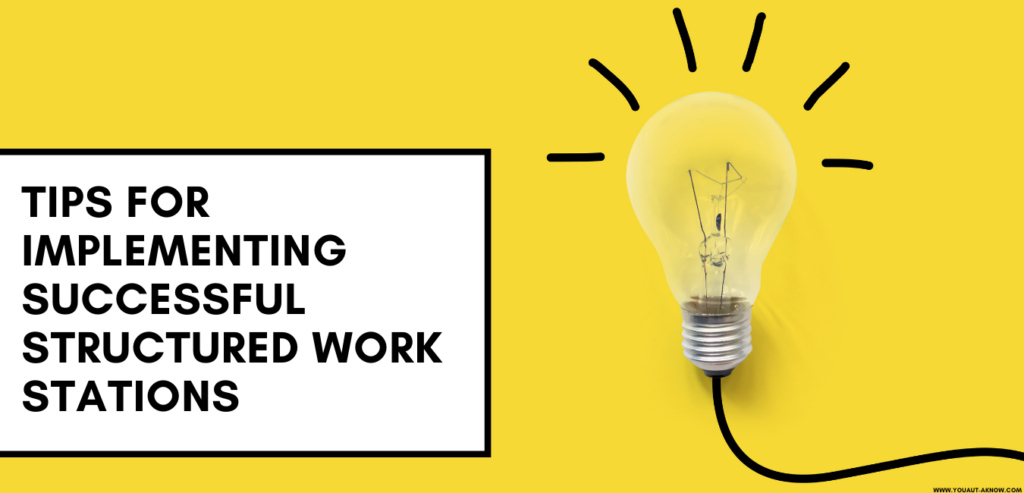
Have I ever told you how much I loved structured work stations? Not only am I teaching students how to become independent workers, but I am also freeing up TIME for myself and my paras to complete 1:1 instruction. Once students are completely independent, I do not need to assign staff to our structured work area. This allows for a person to work with small groups or provide 1:1 instruction.
These are 3 steps for implementing a successful structured work system in your classroom. Check the out!
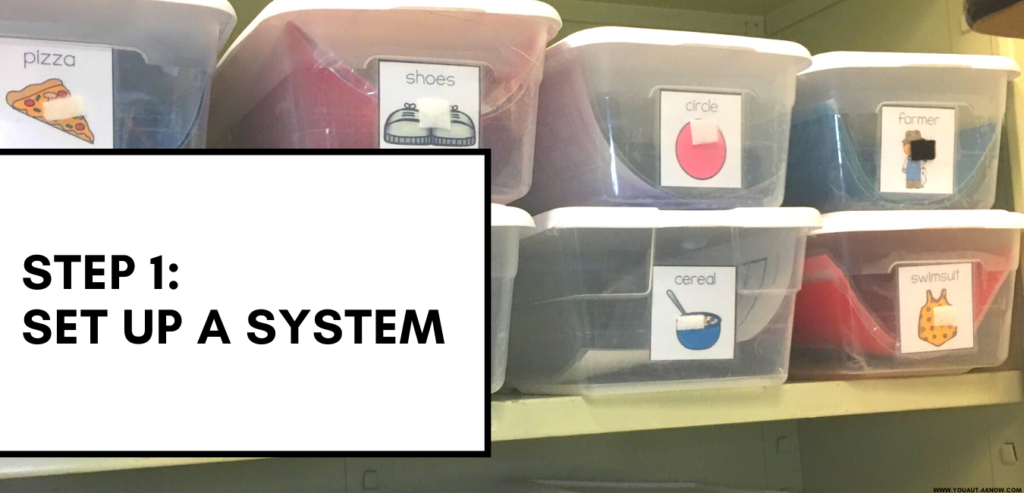
Step 1: Set Up a System
If you haven’t seen the types of structured work stations I use in my classroom, you should check them out:
When you are setting up your work systems, I find it beneficial to set up an area that will be used ONLY for independent working time. I like to make sure I have the following items in my structured work center: desks for student work, storage system for work, and a reinforcement center.
In my classroom, I have added reinforcement into the structured work stations. When my students arrive to the center they choose a reinforcer they want to use when they have completed their work. These reinforcers are in bins just outside of the work area. Once students have completed their work, they have been taught to retrieve the reinforcer and can play with it until we switch centers. This piece of the system has made it truly independent for my learners. It has also allowed my staff and I that essential time to provide 1:1 instruction for other students. The use of open ended reinforcers is great. It provides students with an activity they like that does not have an end time. They’re able to engage with the activity until work time is over. My students seem to learn this quickly which helps them complete their tasks efficiently.
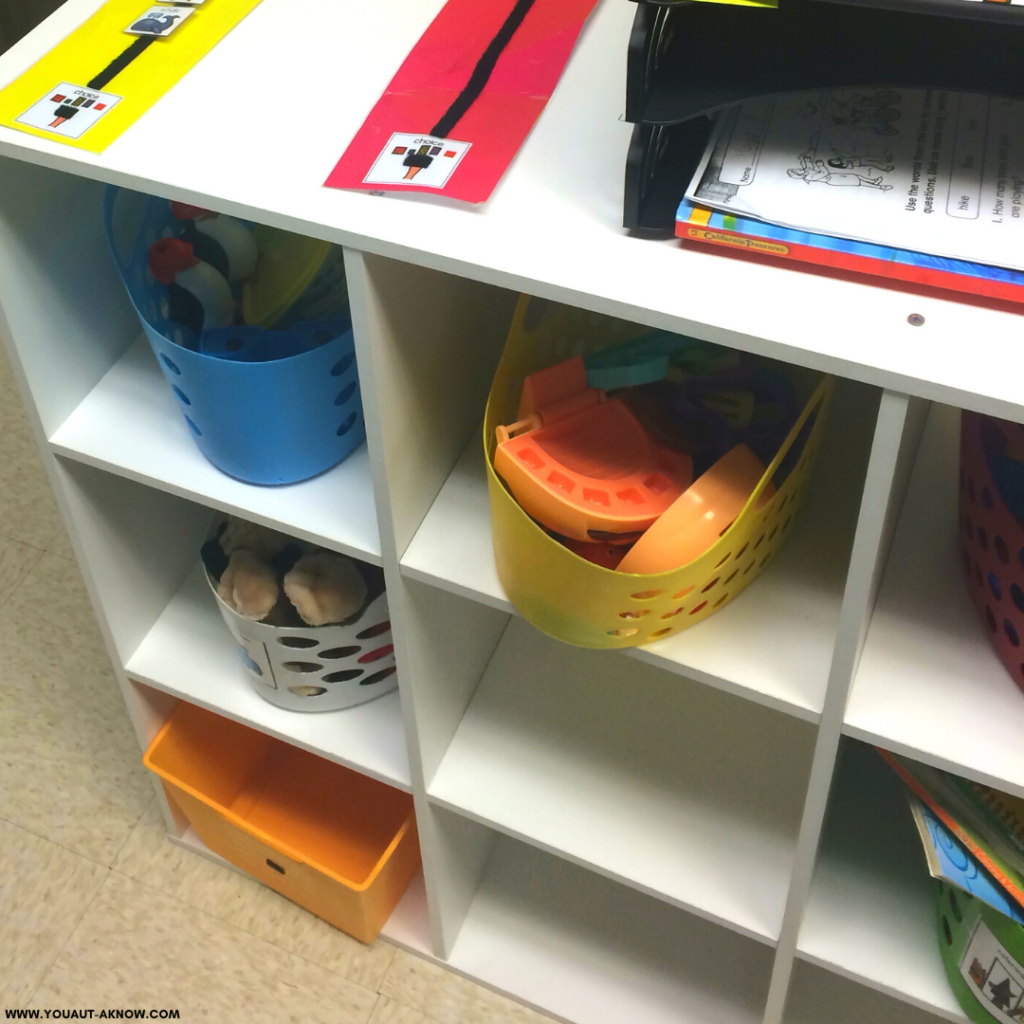
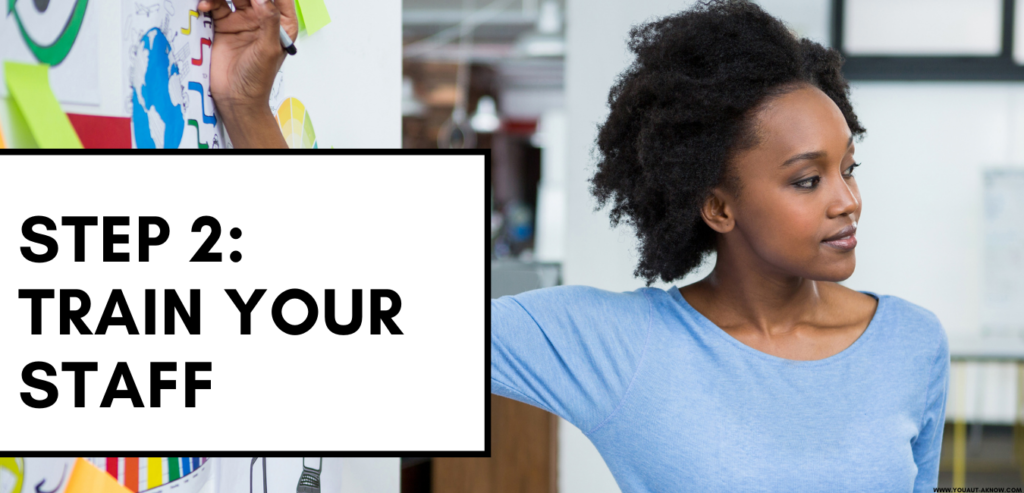
Step 2: Train Staff
I always make sure to train my staff in the basic do’s and don’ts of independent work time. It’s often difficult to find the time to train staff, but I make it a priority. I don’t have a lot of time with staff, especially at the beginning of the year, but I make time. I’ll often train staff during the school day in shifts. This looks like 1 para working or playing with students while I train my other para on a system. Then my paras switch roles and I train again. After providing an overview of what work stations are, I take an opportunity for my paras to shadow me during a work station session. They are able to observe prompting strategies and ask questions as we go.
I have found it is important to stress the importance of independence with staff. I start by talking about the outcome of teaching students to work independently. The fact that independent work time allows for 1:1 instruction is just one benefit. There are countless benefits of teaching students to work independently, but the ability to work and do things without help is great for student self-esteem.
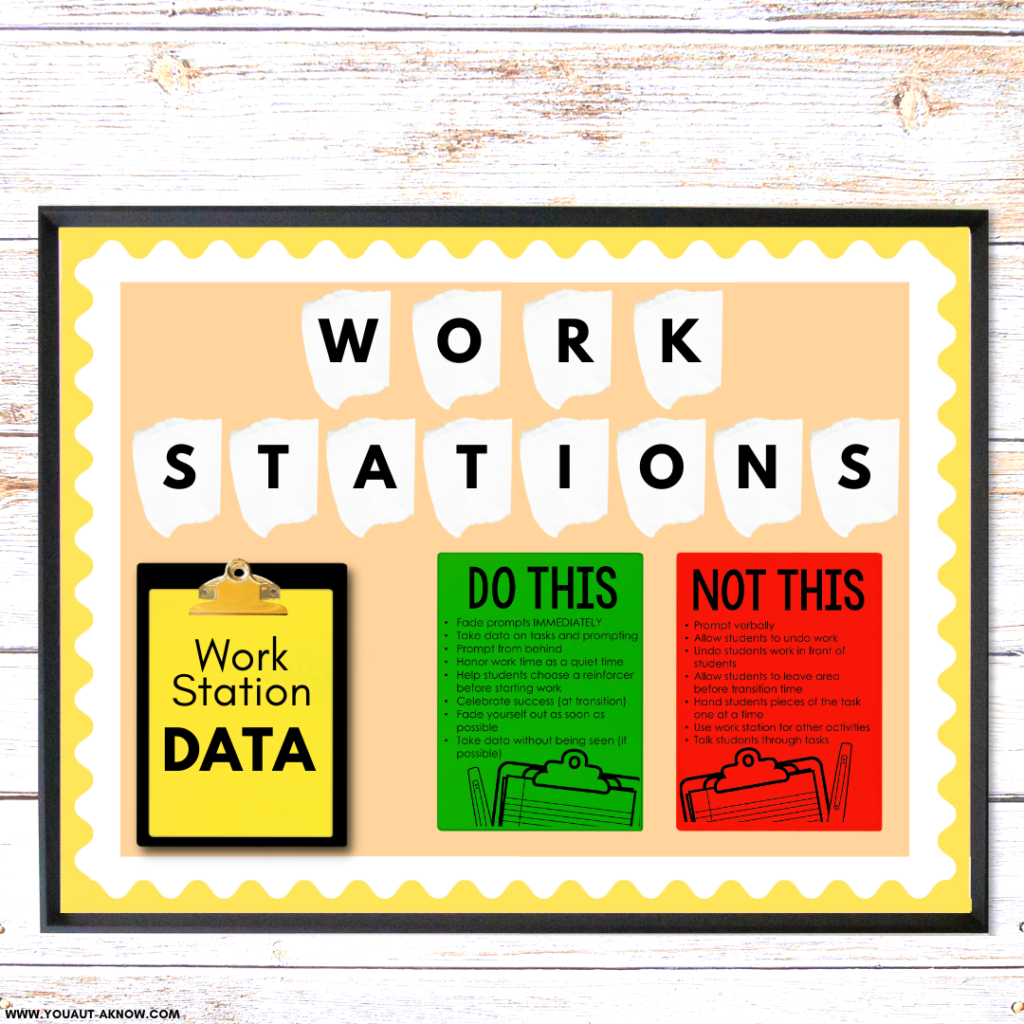
After I have completed training I hang a quick do’s and don’ts poster in the work station. This helps to remind adults what our desired outcome of the process is. It also reminds us of what they we do to help foster independence in our classroom.
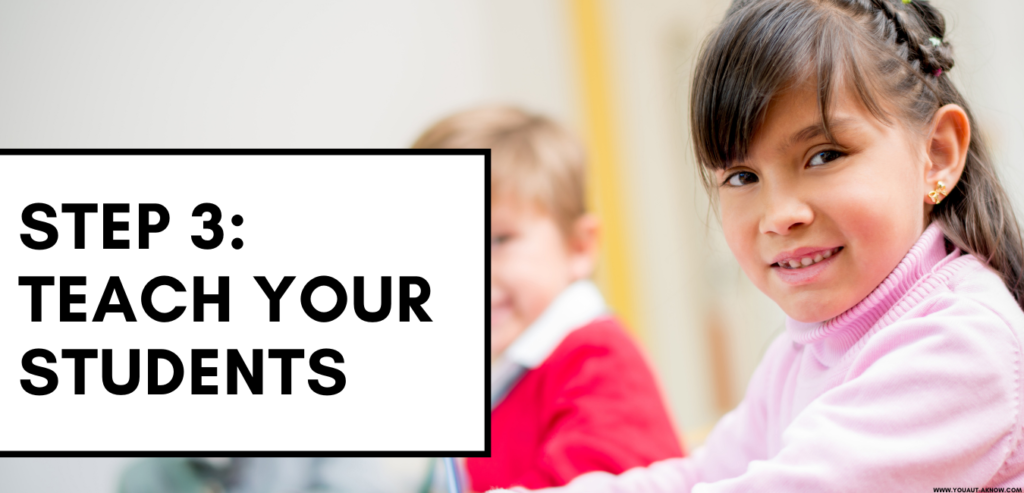
Step 3: Teach Your Students
Here’s the shocking part. You cannot simply put tasks in a box, create icons and task strips, and provide reinforcers and expect your students to know what to do. You are going to have to TEACH your students how to use the work station. In my classroom, I have found prompting and prompt fading to be the best approach when teaching this skill. I will often start with full physical prompts for the entire behavior chain. Then I will fade the last step to a partial physical prompt. I’ll keep fading until they can complete the last step independently. Then I’ll work on fading back prompts in the previous step of the behavior chain.
When my students are able to work 100% independently for 2 straight weeks I will fade my presence from the work area. During this time, I find a task I can do nearby, but start to provide distance between myself and the student. Sometimes I will work on prep at a nearby table and continue to fade my distance from the work stations until my students are continuing to be independent. Once my students are able to complete the tasks and I’ve faded my presence, I take my newly found “free time” to work 1:1 with students or with small groups. I will continue to check in 1-2x a week and collect data, but my student is independent now, we can all celebrate!
Want to grab some posters for your structured work stations? These are great to use in your classroom so you and your staff are using the same strategies with your students? You can grab the posters here.






